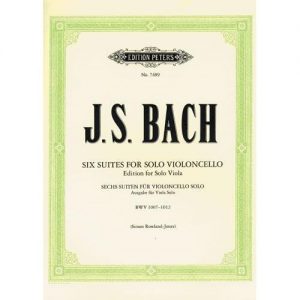With the advent of music editing software like Sibelius or Finale, I have had a renewed interest in composing over the last 10-15 years. Composing is more of a hobby for me, but arranging music has become more than that. I have started making serious money by arranging different music for different ensembles and now that I’ve been doing that for a while, it’s time to share some experience with you.
Arranging vs. Transcribing
Let’s not confuse arranging music with transcribing music. Transcribing means simply taking some music and rewriting it for another instrument. An example would be the Bach cello suites played on viola. No notes are changed, only the range and clef. When we start taking more complicated music and writing it for different types of ensembles, we begin to get into the realm of the arranger. As a general rule, transcribing is easy. Arranging is not.
Generally, the arranger takes a piece of music and rewrites it for a different instrument or ensemble. He also adds his own ideas for accompaniment and counter-melody to make the original sound better for the given ensemble. For example, I arranged the Ysaye Sonata #3 “Ballade” (originally for solo violin) for full orchestra. I added lots of harmony and additional material to fit the larger ensemble while keeping the original piece intact.
An arranger will also take a piece for orchestra like the 1812 Overture and simplify it for a more novice ensemble. I am working on just such an arrangement. I am trying to retain the character and scope of the original while taking away some of the treacherous passages and simplifying the runs and passage work. To do this, I have to segue from one section to another much more simply than Tchaikovsky did it, as well as skipping entire sections (not to worry – I’ve kept the parts with the cannons). The parts that I keep have to blend together and that calls for different harmonies. Thus, I am arranging and not transcribing.
Source Material
For sake of simplicity, let’s talk about arranging for orchestra here. What do we use for source material when we arrange a big orchestral piece for a novice ensemble? Usually, the first answer is the original score. The original score has the composer’s initial intentions and his own orchestration to try and emulate. Lately, however, I have been staying away from the original score and using a piano reduction as my source material. Here’s why.
If I use the original score, I will be likely to copy the exact orchestrations and voice structure in an effort to remain true to the composer. The entire reason for arranging this piece in the first place is to make it easier and more accessible to less advanced groups so the original won’t be playable for most novice ensembles. If I use the piano score, I can assign my own orchestration based on what level I want to make the arrangement. All I need to complete the arrangement is the melody and harmony and that’s why a piano score is perfect.
 Composers from the Romantic period until now have usually “composed” their music for piano, then they orchestrate it later. Brahms, Mahler, and Tchaikovsky are perfect examples of this technique. I think following in their footsteps is certainly worth trying. Recently I performed with the Georgia Symphony. This is a piece written for piano by Modest Mussorgsky but later orchestrated by Maurice Ravel. Again, working from a piano score gave great results. I do look at the original orchestral scores from time to time just for some ideas and detail work, but I prefer to use the piano score as my primary source.
Composers from the Romantic period until now have usually “composed” their music for piano, then they orchestrate it later. Brahms, Mahler, and Tchaikovsky are perfect examples of this technique. I think following in their footsteps is certainly worth trying. Recently I performed with the Georgia Symphony. This is a piece written for piano by Modest Mussorgsky but later orchestrated by Maurice Ravel. Again, working from a piano score gave great results. I do look at the original orchestral scores from time to time just for some ideas and detail work, but I prefer to use the piano score as my primary source.
Solving Problems
To me, arranging is a series of problems that need solutions. I enjoy deciding which instrument should play the melody vs. which one should accompany it. When I hear a piece for, say, piano trio, I often think that certain sections would sound awesome played by a full orchestra with brass, percussion, and the whole works. I will often alter my plans as I go because it turns out that instead of orchestra bells, I need chimes. Or, instead of oboe playing that melody, it sounds better with English Horn.
Then there is the issue of modulating in order to seamlessly put two sections together that didn’t go together in the original. Knowing basic harmony isn’t quite enough here. You need to know how to get from one key to another, and sometimes this requires some imaginative chord progressions. Use all the reference material you can find to make your creation perfect.
Finally, an arranger needs to know the basic principals of every instrument he is writing for. For this, I recommend Orchestration and Instrumentation by Alfred Blatter. Not a cheap book by any stretch, but it is by far the best resource I have seen on the subject. As a performer, nothing screams “novice composer” like notes that can’t be played on my instrument. Don’t be that guy. The musicians performing your music are laughing at you.
A Funny Story
Speaking of knowing instruments; when I was in college I studied conducting in addition to violin. On the first day of my second semester of conducting, the professor announced that conductors are required to know the range and transposition interval for all band and orchestral instruments. This is absolutely true, but seemed daunting at the time. On the last day of class, we took the written portion of our final exam (the rest was actually conducting a live orchestra). After two pages of questions about music theory and score reading, the final question was, “Name all band and orchestral instruments, their range, and transposition interval. Use extra pages if necessary.” Well, OK then.
Educating vs. Showing Off
I do three types of arrangements. There are arrangements for educational purposes; those that are for student or community groups. Then there are the more artistic ones written for professional players. For these, I pay no attention to difficulty and only try to make an awesome piece of music. Finally, there are arrangements that I use for gigs (weddings etc.). In terms of sales and money, I do best with the educational and gig arrangements. I use the professional arrangements as an artistic outlet. They don’t get performed very often, but they are a lot of fun to write.
For educational arrangements, you need to keep a few things in mind. First, you need to write music that is playable by the level of ensemble for which you are writing. Most of my arrangements in this category are playable by a decent high school group or very talented middle school group. Next, you need to keep the overall length of these arrangements under 10 minutes. Almost every one of these that I’ve done is approximately 7 minutes. School and community groups don’t have the stamina to play an entire movement from a Brahms symphony (normally 15-25 minutes). The audiences also don’t have the stamina to listen to a long piece.
When I do educational arrangements, I work hard to keep the most important source material in there while simplifying and shortening the overall work. Too many arrangements just focus on one theme like the Ode to Joy by Beethoven or the Finale of Brahms 1st symphony. Within these movements, there are many additional themes and melodies that deserve attention. My current project is Brahms 1st and I made sure that the chorale in the finale is emphasized in addition to the famous theme that everyone knows.
Arranging – Final Thoughts
In order to be a successful arranger, you need a strong overall knowledge of music theory, instruments and their properties, and good tools to work with. The most important tools will be a good music software program (Sibelius, Finale, or something just as strong), a powerful computer, and a midi keyboard (optional but really helpful). You don’t have to sell a kidney to get these things. Keyboards can be had for under $200. A solid desktop PC is under $500. The most expensive part will be the software. Sibelius (my program of choice) and Finale are both around $600. There are others out there for less so check them out.
As for selling your work, there are many ways to do this. I use Score Exchange which is dedicated to Sibelius users and their compositions. If you are lucky, maybe a publisher hires you to work for them. Someone like Hal Leonard or Alfred Music. Joining ASCAP or BMI is also something you should consider. These are associations similar to a musicians’ union, but for composers and songwriters. They assure that you receive proper compensation for your work.
Finally, it helps to have a group to write for. Vivaldi was headmaster at a school for girls and wrote all of his concertos for whomever he had that year. That is why some of his concertos have odd combinations like violin and mandolin, or flute and recorder. I play in a local community orchestra and have been doing arrangements based on the group’s abilities and personnel. This helps with motivation and also with getting your music performed.
I hope this was helpful. Please let me know if you have any questions or comments. Have a great day!



